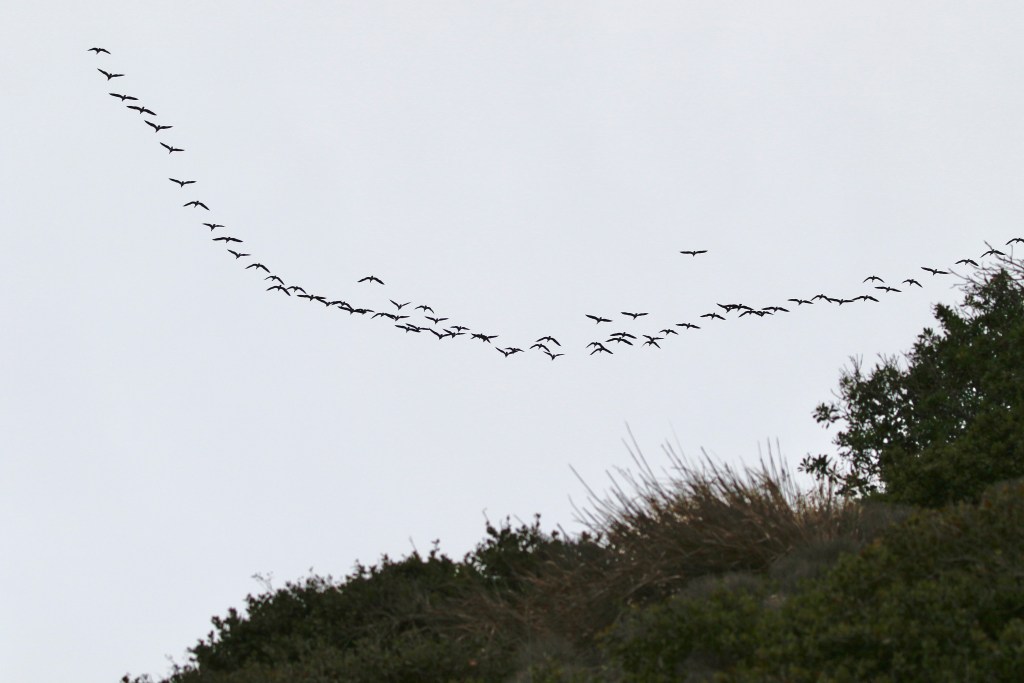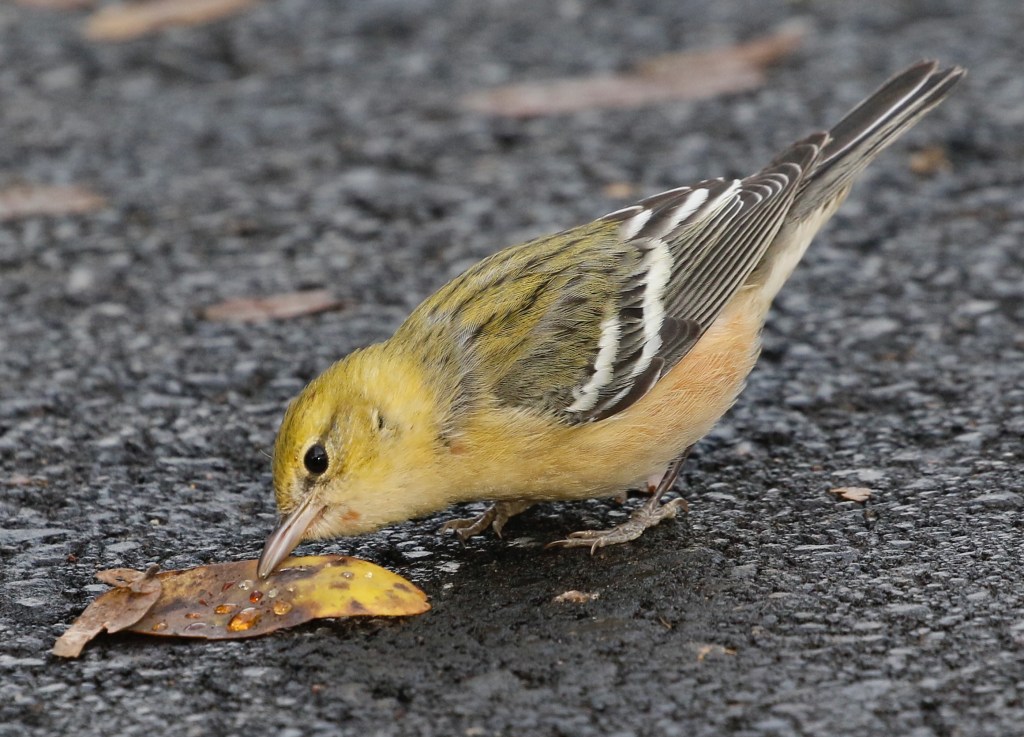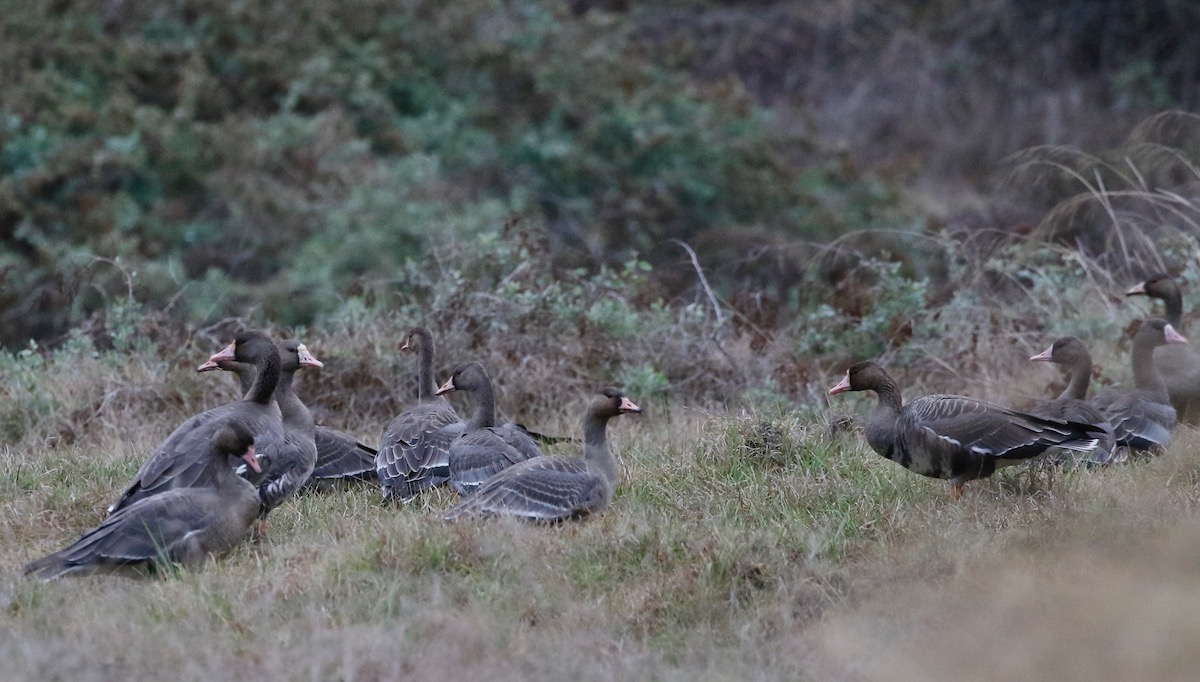On the morning of October 10, I was birding on Santa Cruz Island and was puzzled by what sounded like the yapping of small dogs coming from high overhead. At first I saw only sky, but then a large skein of geese in a ragged V formation flew overhead — they were greater white-fronted geese. Over the morning, several more skeins flew over, totaling more than 150 birds. A small flock even settled down in the watershed near the anchorage and proceeded to graze on what grasses they could find. When I got home later that day, I found that the birding hotlines were abuzz with news that large numbers of greater white-fronted geese had been seen across coastal southern California. This goose is regular in winter here, but usually only in very small numbers.
Greater white-fronted geese breed on the Arctic tundra and winter by the thousands in California’s Central Valley, as well as in Texas and Mexico. Adults form close pair bonds, mating for life, and they travel together after leaving the nesting site. The offspring also travel with their parents until they are old enough to breed at 3 years of age. Until then, during breeding season, they will help their parents defend the nest. Adults are easy to identify by the white feathering at the base of the bill that gives the bird its name, while juveniles lack this feature. The birds that landed at Scorpion Cove on Santa Cruz Island appeared to represent two or three family groups.

Birders were soon conjecturing about the possible reasons behind the sheer number of birds being seen up and down the coast. It appears that the birds had come here from the Central Valley after finding a shortage of food there. Geese get much of their sustenance from grains that have been missed during the fall harvest, particularly rice. Because of the water shortage, far less rice had been planted than usual, there was less food for the geese, and so the wandering birds were desperately looking for sustenance.
Soon, many of these birds were found dead or dying, and it was feared that avian influenza, a highly contagious and lethal virus, could be the culprit. To date, those carcasses that have been analyzed in our county show no sign of influenza, so the causes of death are currently a mystery, with starvation as one of the possible factors.
Greater white-fronted geese have been showing up in odd places. A widely viewed bird landed on the field at Dodger Stadium during a playoff game and caused quite a stir. Until the announcers were told otherwise, they referred to it as a mallard. Closer to home, an odd sight was a gaggle of 10 birds waddling down East Beach. Look out for these geese wherever there is fresh water; Lake Los Carneros has recently hosted a flock.

If goose numbers continue along the coast, this should be an easy find during Santa Barbara Audubon’s annual Christmas Bird Count. This year’s count, the 123rd, will be held on Saturday, December 31. In December’s column, I’ll give you more information in case you’d like to participate.
The ninth annual Audubon Winter Bird Count 4 Kids is returning to an in-person format this year. As in past years, the event will be held at one of our best birding locations, Lake Los Carneros in Goleta, on the morning of Saturday, January 21, 2023. I’m volunteering to be one of the group leaders, so I hope to see you and your children there — and quite possibly a greater white-fronted goose or two.
Finally, the exceptional fall migration has continued since last month’s article. A Goleta tech park, with its psyllid-infested Tipuana trees, has continued to draw large numbers of western migrants with a sprinkling of rare eastern North American birds. Pride of place at this location goes to the bay-breasted warbler, a bird hard to find anywhere in California and a life bird for many. This lovely juvenile male was astonishingly tolerant, even spending quite a bit of time hopping around in the parking lot and coming within feet of observers. It was a welcome respite from the usual “birder’s neck” that we suffer from when peering high into the canopy above, where most warblers spend their time.

Support the Santa Barbara Independent through a long-term or a single contribution.

 on Google
on Google 



You must be logged in to post a comment.